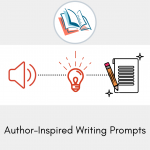Writing Prompts: Make it Flow
Fluency in writing takes practice and aims to create a natural flow that lets you escape into the book. As you practice your own writing, consider these resources showcasing multiple ways to look at fluency and writing style.

